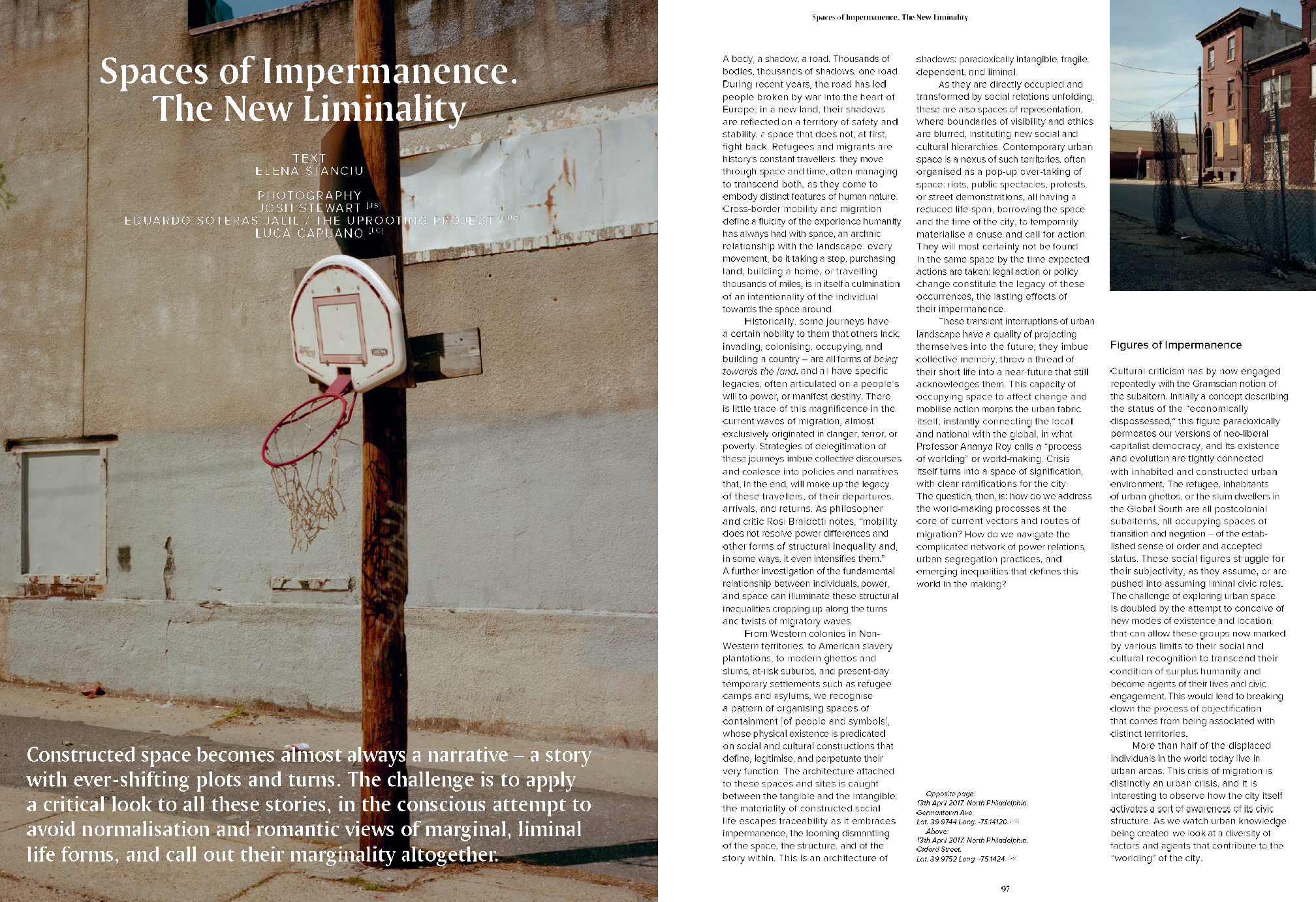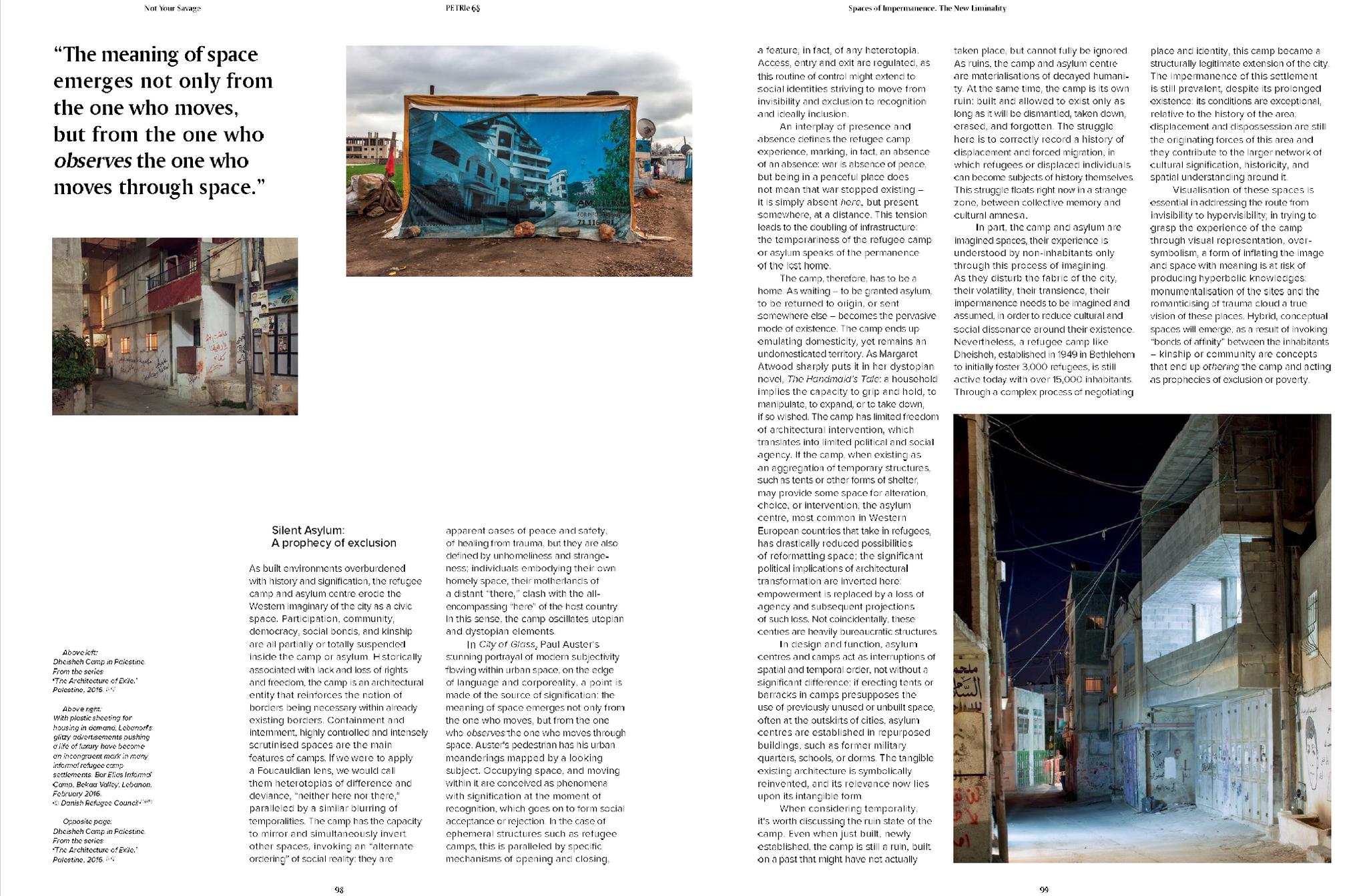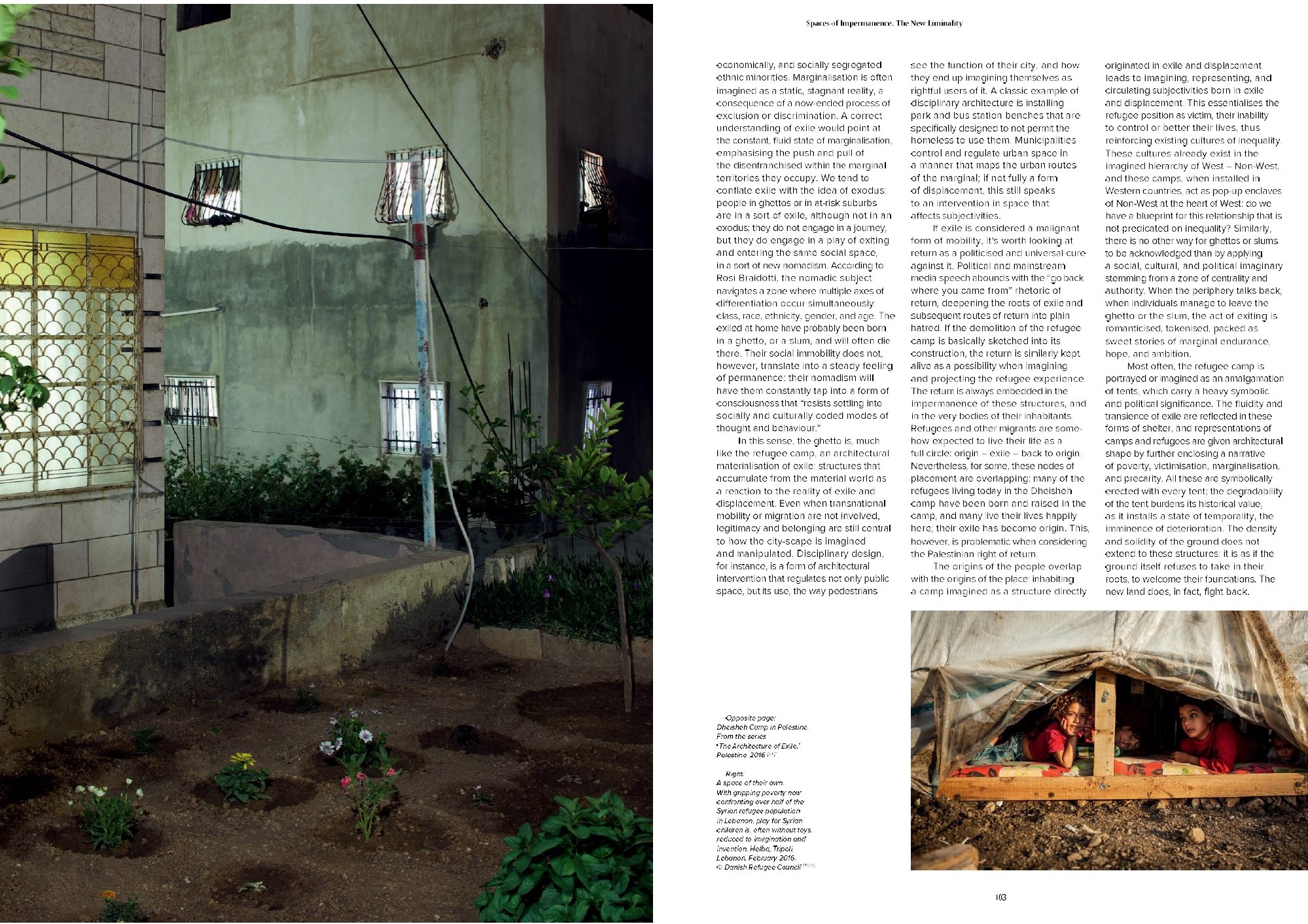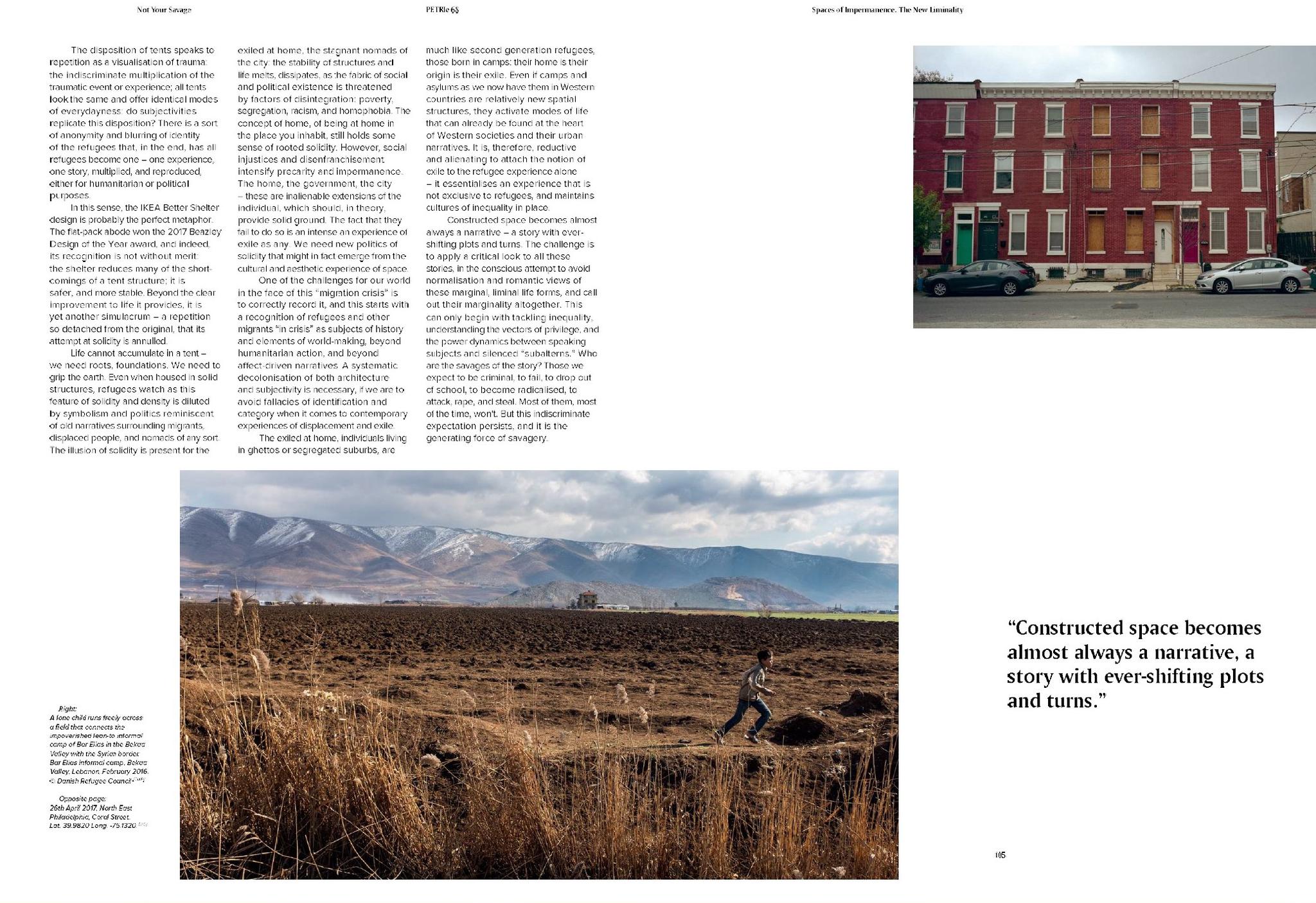PETRIe 68: Spaces of Impermanence. The New Liminality

"A body, a shadow, a road. Thousands of bodies, thousands of shadows, one road. During recent years, the road has led people broken by war into the heart of Europe; in a new land, their shadows are reflected on a territory of safety and stability, a space that does not, at first, fight back. Refugees and migrants are history´s constant travellers: they move through space and time, often managing to transcend both, as they come to embody distinct features of human nature. Cross-border mobility and migration define a fluidity of the experience humanity has always had with space, an archaic relationship with the landscape: every movement, be it taking a step, purchasing land, building a home, or travelling thousands of miles, is in itself a culmination of an intentionality of the individual towards the space around."

From Western colonies in Non-Western territories, to American slavery plantations, to modern ghettos and slums, at-risk suburbs, and present-day temporary settlements such as refugee camps and asylums, we recognise a pattern of organising spaces of containment (of people and symbols), whose physical existence is predicated on social and cultural constructions that define, legitimise, and perpetuate their very function. The architecture attached to these spaces and sites is caught between the tangible and the intangible; the materiality of constructed social life escapes traceability as it embraces impermanence, the looming dismantling of the space, the structure, and of the story within. This is an architecture of shadows: paradoxically intangible, fragile, dependent, and liminal.
***
In design and function, asylum centres and camps act as interruptions of spatial and temporal order, not without a significant difference: if erecting tents or barracks in camps presupposes the use of previously unused or unbuilt space, often at the outskirts of cities, asylum centres are established in repurposed buildings, such as former military quarters, schools, or dorms. The tangible existing architecture is symbolically reinvented, and its relevance now lies upon its intangible form.
***
As Jamele Bouie states, in a sharp critique of these practices: “When you prevent a whole class of people from building wealth, accessing capital, or leaving impoverished areas, you guarantee cultural dysfunction and deep, generational poverty. When it comes to inner-city poverty—we built that.” Inequality seems to be not enough of a smothering phenomenon; it is joined by a type of racism that engages with urban space in manner that not only produces signification and social meaning, but it also manipulates these spaces to accomplish economic goals, at the expense of their inhabitants.
This is a unique type of violence, so pervasively established that its removal necessitates not only a rethinking of governmental and local policy making, but also a cleansing of collective memory and social histories of deeply engrained racial prejudice. Inhabitants of ghettos inhabit ruins, the ruins of a decaying social fabric; just as refugee asylums and camps, these areas embody the absence of other urban spaces; the functionality of these spaces, of their architecture is shadowed by inevitable deterioration, which asserts impermanence as a mode of life. A suspension in time is the paradoxical mark of impermanence here, as it relates to a permanent state of degradation of these neighbourhoods: the uncertainty of the future, the lack of clear intervention strategies to reduce inequality and poverty, the perpetuation of social degradation to mirror that of constructed landscape.
Permanence here coexists with its own inversion: the seemingly endless disillusion with the inhabited space, and the decaying quality of social and political life work to instil a sense of impermanence, of aimlessly floating in an inhospitable environment that must, for lack of another, be called home.


